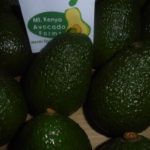 Kenya is at the start of the fuerte avocado season which runs from March every year. Despite the high rainfall the country has experienced in recent months, harvests and transportation of avocado exports have not been hampered. The country reached 46.7 metric tons worth of avocado exports in 2016, and expects to equal the fete in both the 2017 and 2018 periods. This was a significant rise from some 38.9 metric tons of sales 3 years ago. Some of the reasons that have highlighted the growth rate despite the recent export ban are illustrated next:
Kenya is at the start of the fuerte avocado season which runs from March every year. Despite the high rainfall the country has experienced in recent months, harvests and transportation of avocado exports have not been hampered. The country reached 46.7 metric tons worth of avocado exports in 2016, and expects to equal the fete in both the 2017 and 2018 periods. This was a significant rise from some 38.9 metric tons of sales 3 years ago. Some of the reasons that have highlighted the growth rate despite the recent export ban are illustrated next:
Firstly, the Kenya avocado sector has attracted new buyers from existing markets like the European Union (EU) and fresh markets like the Middle-East. In 2017, the combined output of all exporters attracted 142 fresh orders from Europe. This was together with 156% rise in the size of exports between 2016 and 2017. New markets include Dubai, which despite being in its first stages of trade, is becoming an avocado destination to reckon with. It is also a net importer of an assortment of other fruits like citrus, banana, pineapple and seasonal tropical produce. Dubai serves as the first point of contact for fresh produce from around the world before it is disbursed directly to other parts of the Middle-East.
Secondly, the rise in the number of family growers who have acquired Global Good Agricultural Practices (GAP) certificates has led to more import endorsement for Kenya avocados. In Murang’a alone, which is home to both hass and fuerte varieties, eleven SMEs as well as nearly three hundred farmers from several cooperatives already have the GAP credentials. The farmers’ cooperatives can now export directly to the international market courtesy of their certifications.
Thirdly, there are new organic methods of adding organic value to raw avocados in Kenya. With proper husbandry, the fruit-bearing trees are needing nothing more than farmyard compost, rain and fertile soil to cultivate. The use of beneficial insects by some farmers in Meru in the Mount Kenya region is also helping in producing avocados that meet market quality specifications. Bees, are in fact a part of the reason the family growers intercrop fuerte and hass to cross-pollinate them. These knowledgeable farmers are also keeping insect traps to harness moths that bore into the fruit, which is bringing down the problem of pesticides.
There are also improvements in the storage parameters. With enhanced warehousing under lease, farmers are now accessing proper rentable cold rooms that help to reduce post-harvest losses. If a warehousing bill for 2018 comes to pass, it will even be possible to store higher volumes of produce to prevent losses between harvests.
Last but not the least, artistic projects, as far-fetched as they may sound have partially contributed to Kenya avocado growth. For instance, the ICT docket is preparing a film entitled Netherlands Trust Fund III-Avocado Project. The production is taking place in Kenya and will help to boost the fruit’s export margins.
Therefore, avocado farming in Kenya may be experiencing a comeback after the lull during January under the export ban. There are now more varieties but hass still remains the market favorite. There are also a number of large-scale processing plants in Central Kenya that have sidelined their traditional pineapples in favor of the avocado crop. This means that it is just a matter of time before the crop bounces back to its original export quality parameters.

